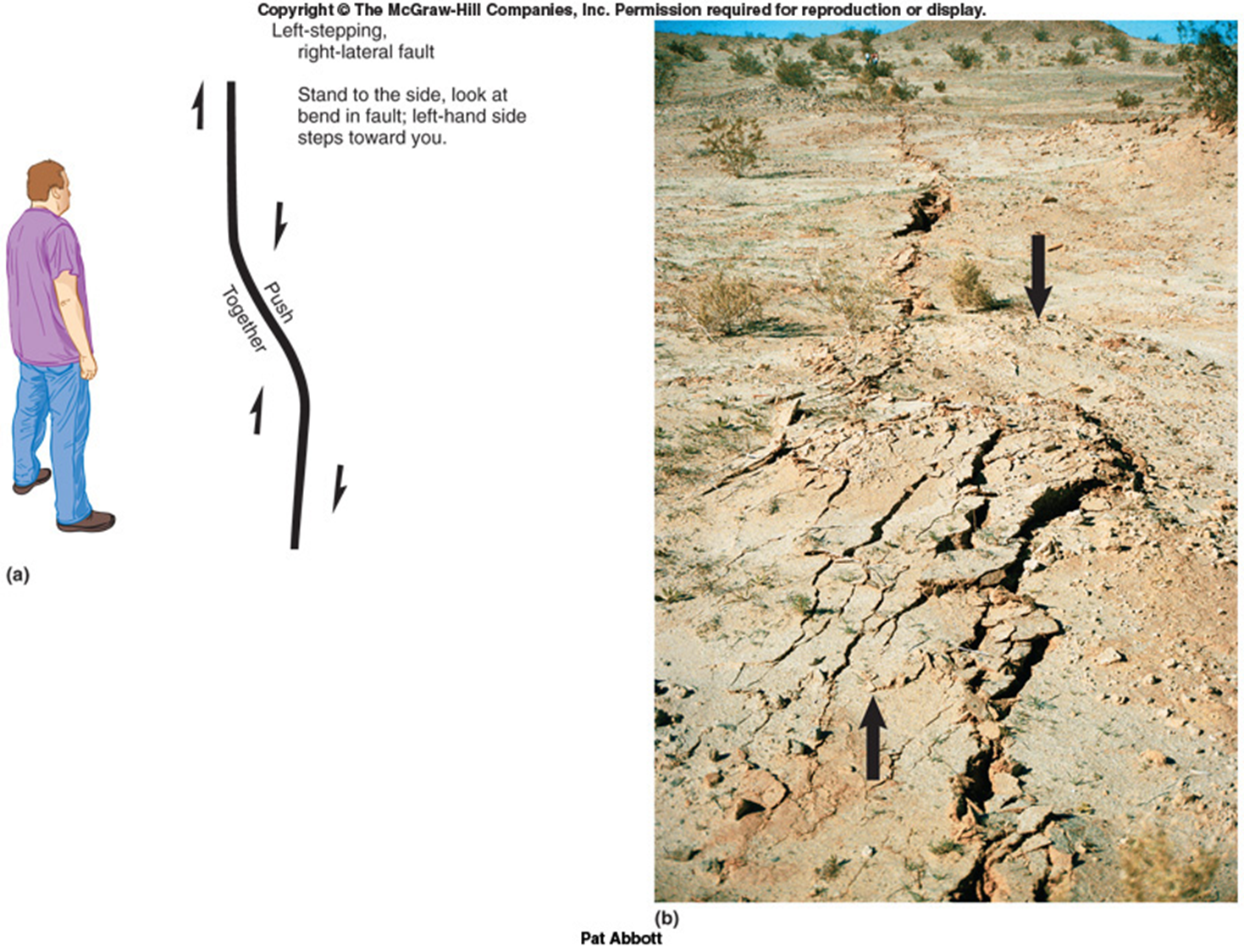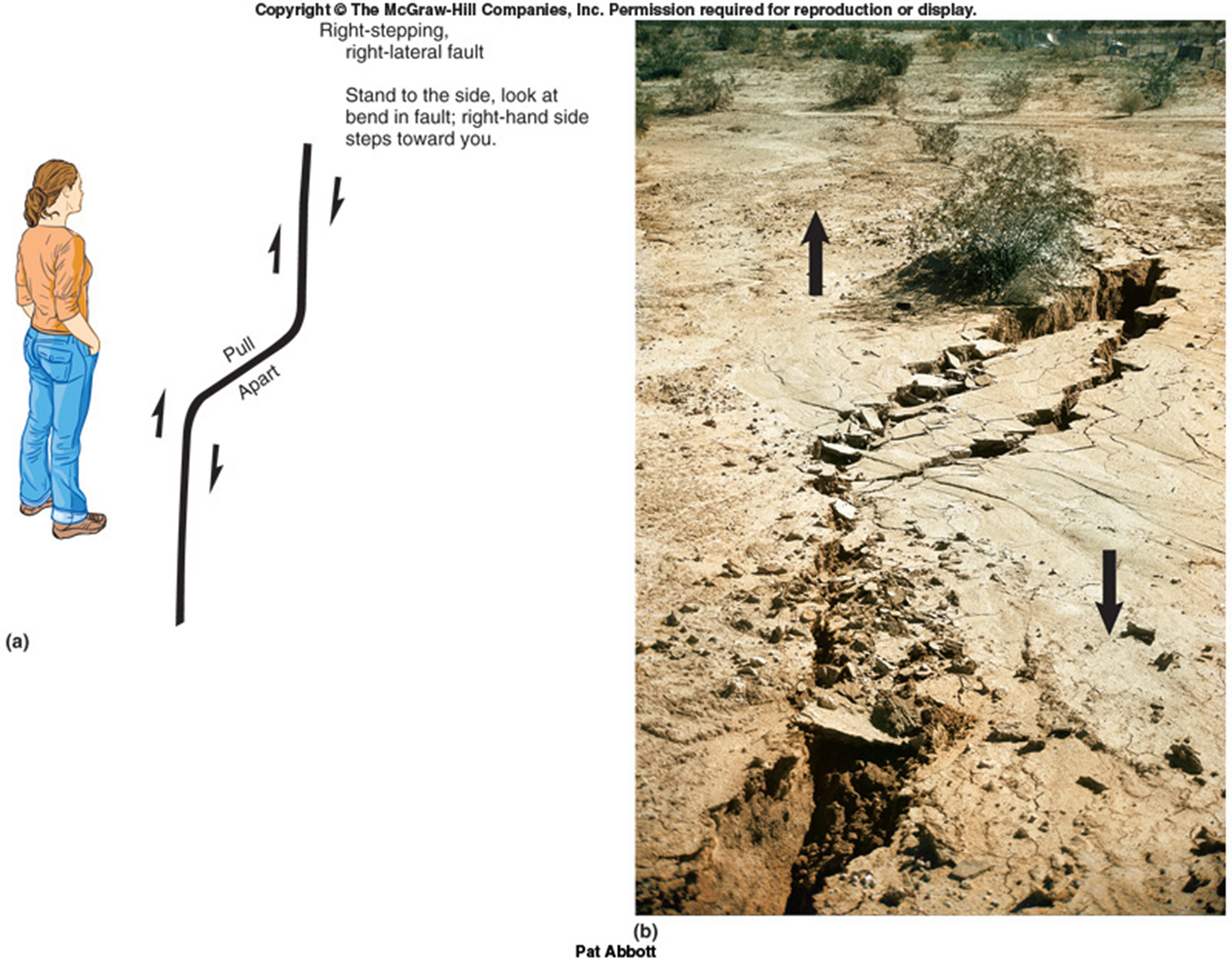
Earthquakes
Faults
Faults are fractures in the crust along which appreciable displacement has occurred. This displacement can occur at the surface (surface rupture) or at depth (rupture area) or both. Movement can be horizontal and/or vertical. The amount of displacement varies, but typically the larger the earthquake the more displacement there is.
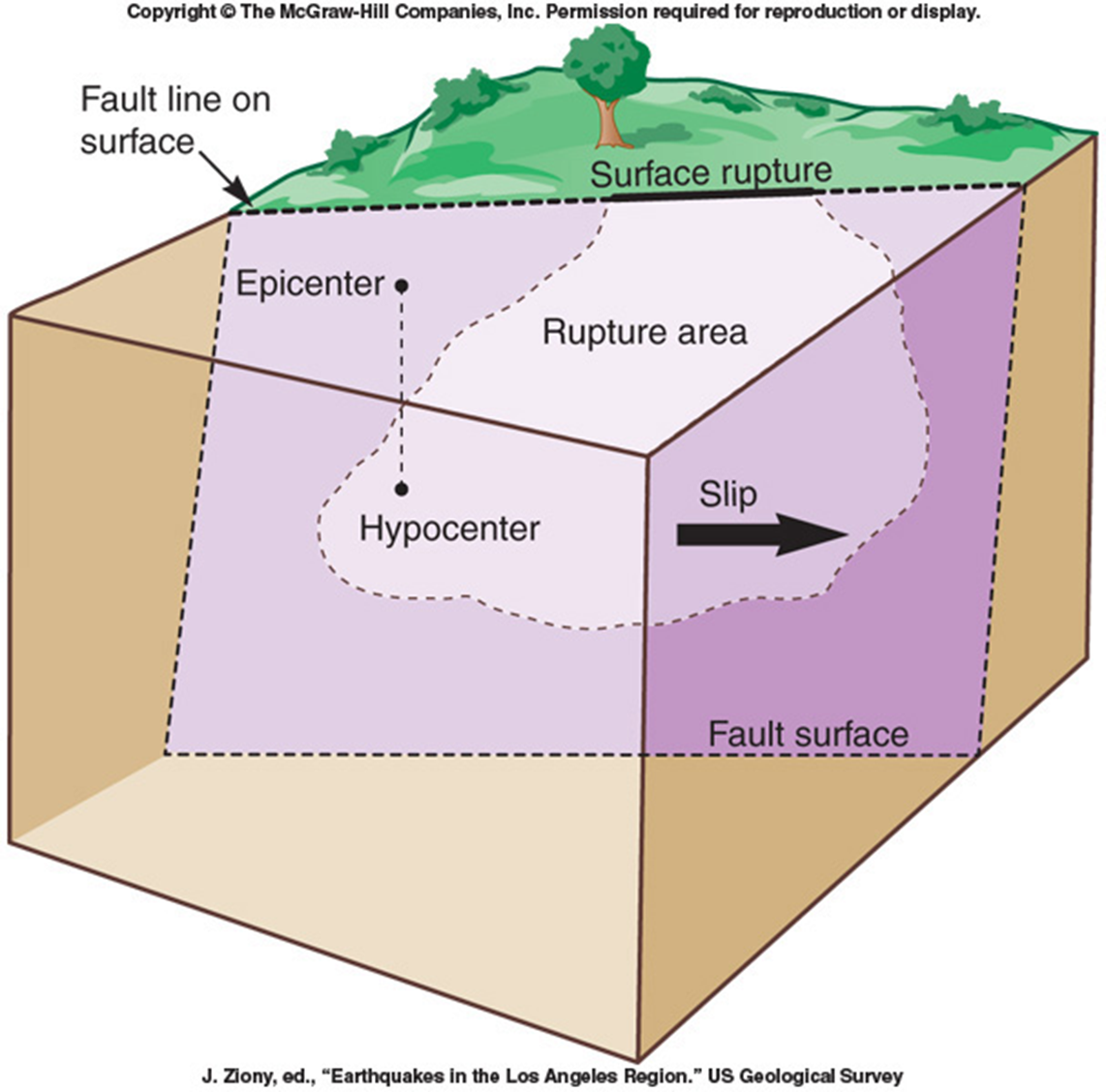
Types of Faults
Faults are grouped into two types: Dip Slip, where the displacement is mostly vertical, and Strike Slip, where the displacement is mostly horizontal.
Dip Slip Faults
Movement on these faults is primarily vertical and parallel to the fault plane. Displacement along these faults may produce long, low cliffs called fault scarps. A fault separates two blocks of the Earth's crust and, with dip slip faults, this surface is inclined (see diagram). The block that is on top is called the hanging wall (you can hang a lantern from it); the block that is on the bottom is called the footwall (you can put your feet on it)
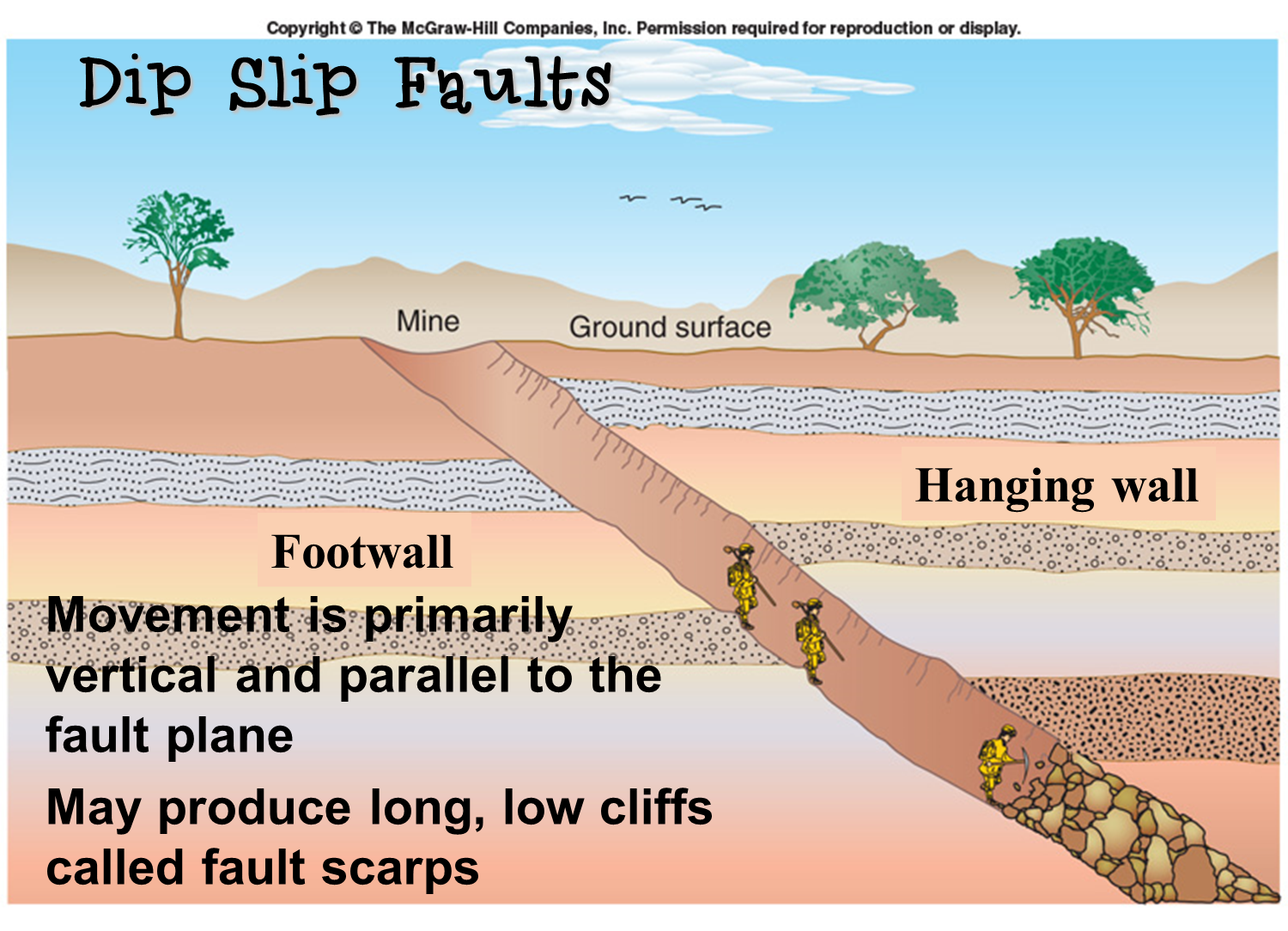
Normal Faults
The hanging wall block moves down relative to the footwall block. This type of motion accommodates the lengthening or extension of the crust.

Reverse faults
The hanging wall block moves up relative to the footwall block. Reverse faults have dips greater than 45° while thrust faults have dips less then 45°. Both accommodate shortening of the crust (compression).
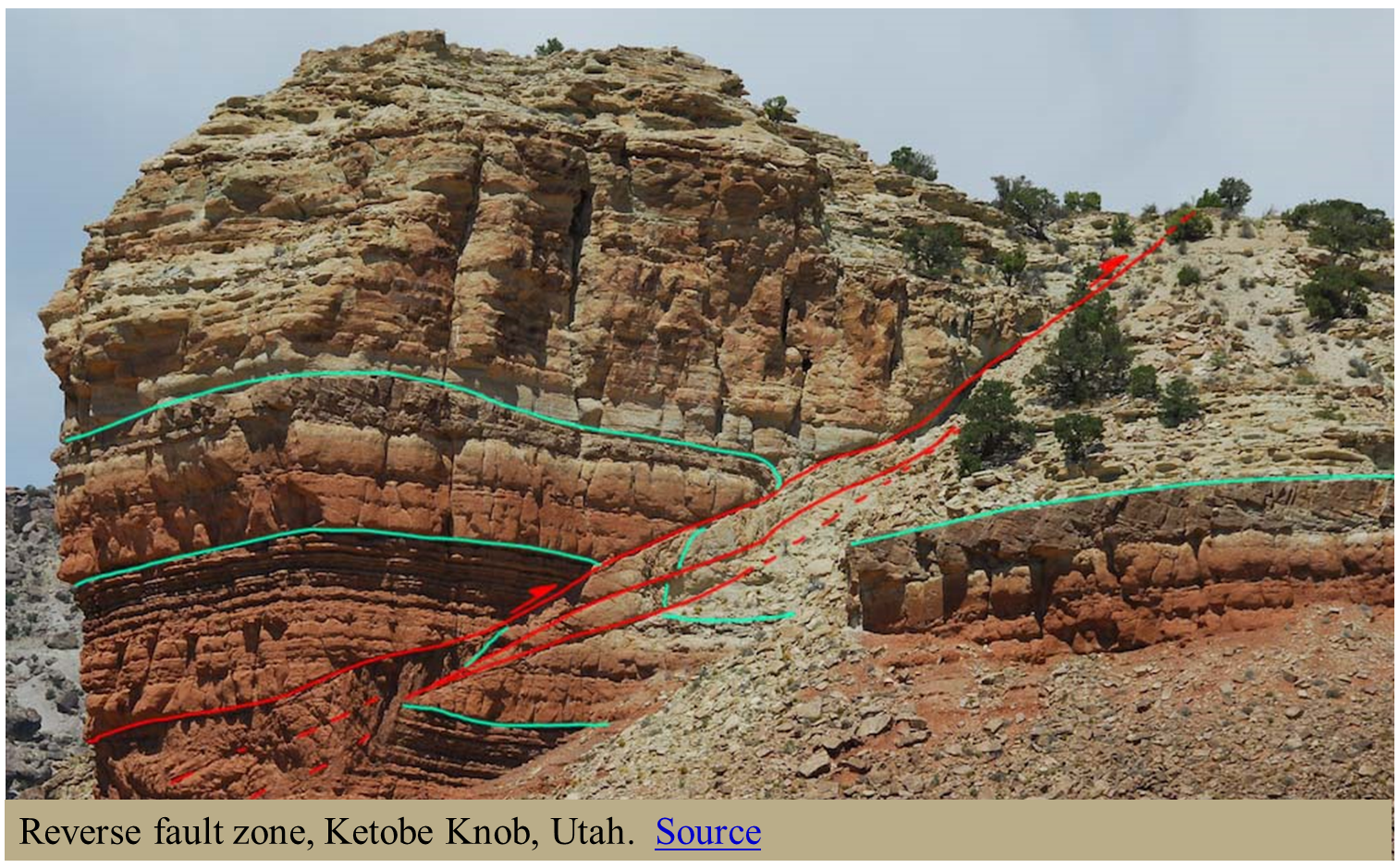
Strike-Slip Faults
Dominant displacement is horizontal and parallel to the strike of the fault. There is no hanging or footwall block associated with these faults. Instead, the two blocks move horizontally past one another.
Right-lateral - one side moves to the right
Left-lateral- one side moves to the left
Transform fault - All transform plate boundaries are strike slip faults.
Movement is not always perfectly straight. Sometimes the fault shifts or "steps" to the right or to the left, which can cause areas of compression or tension to form.
